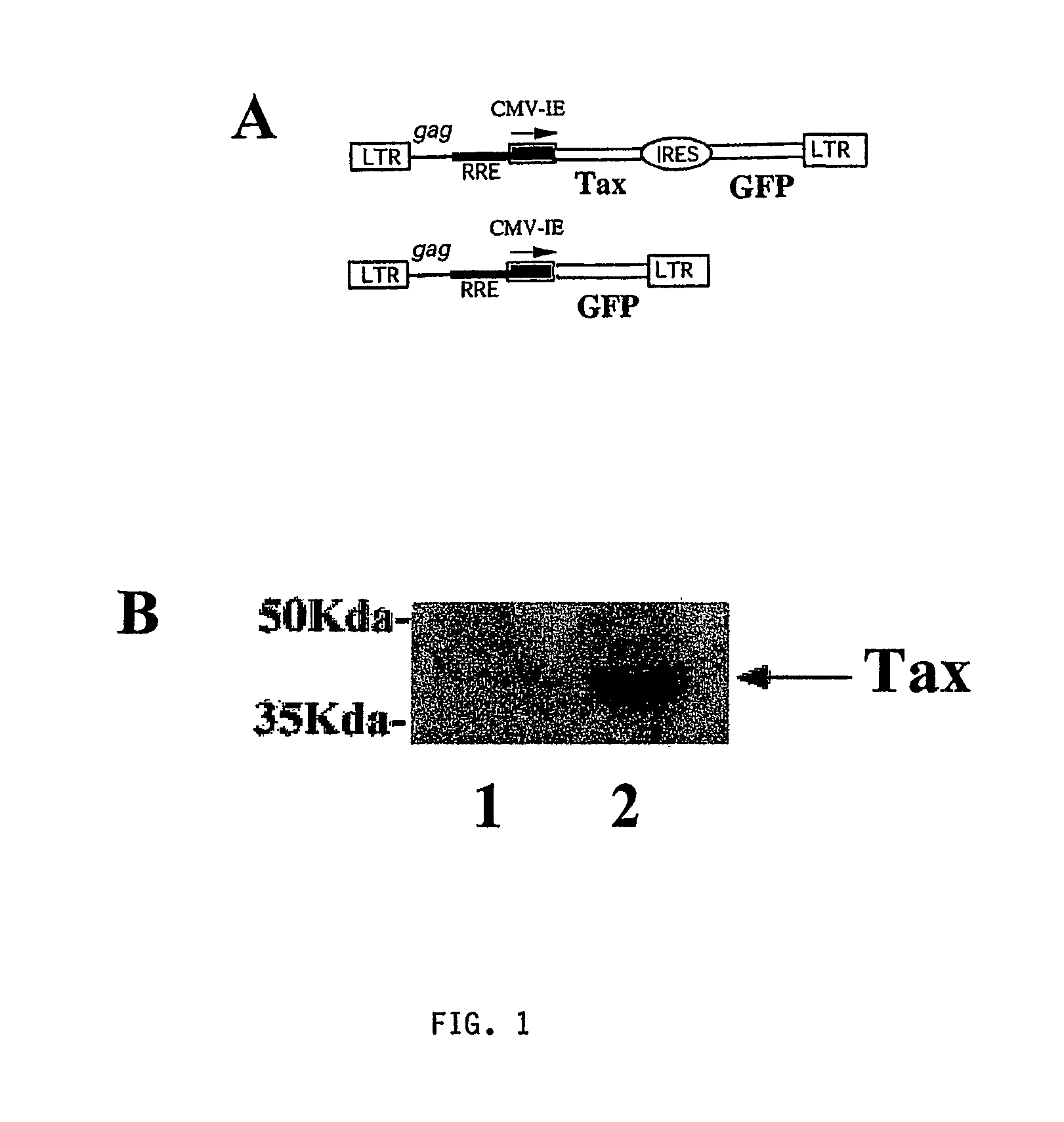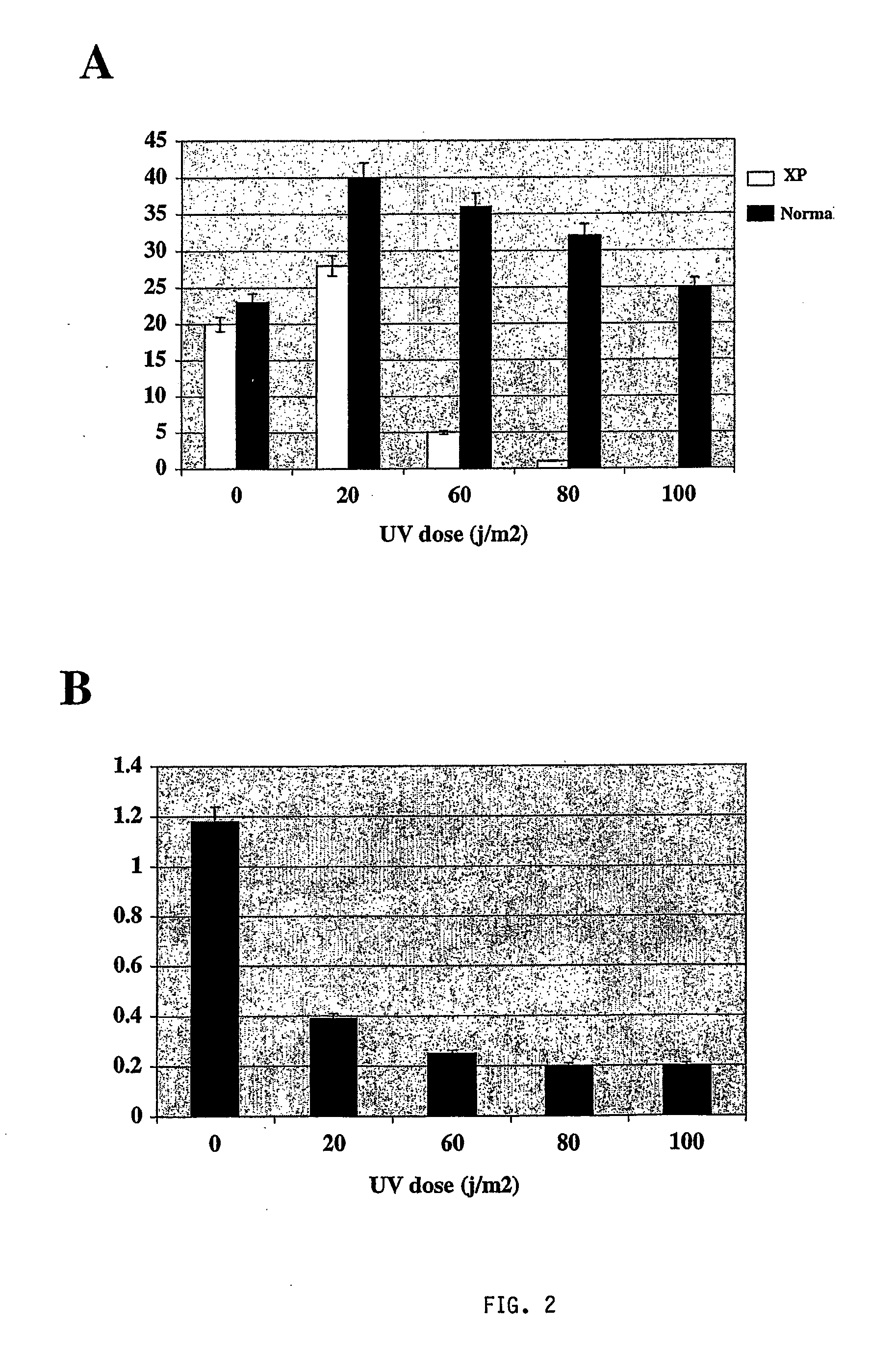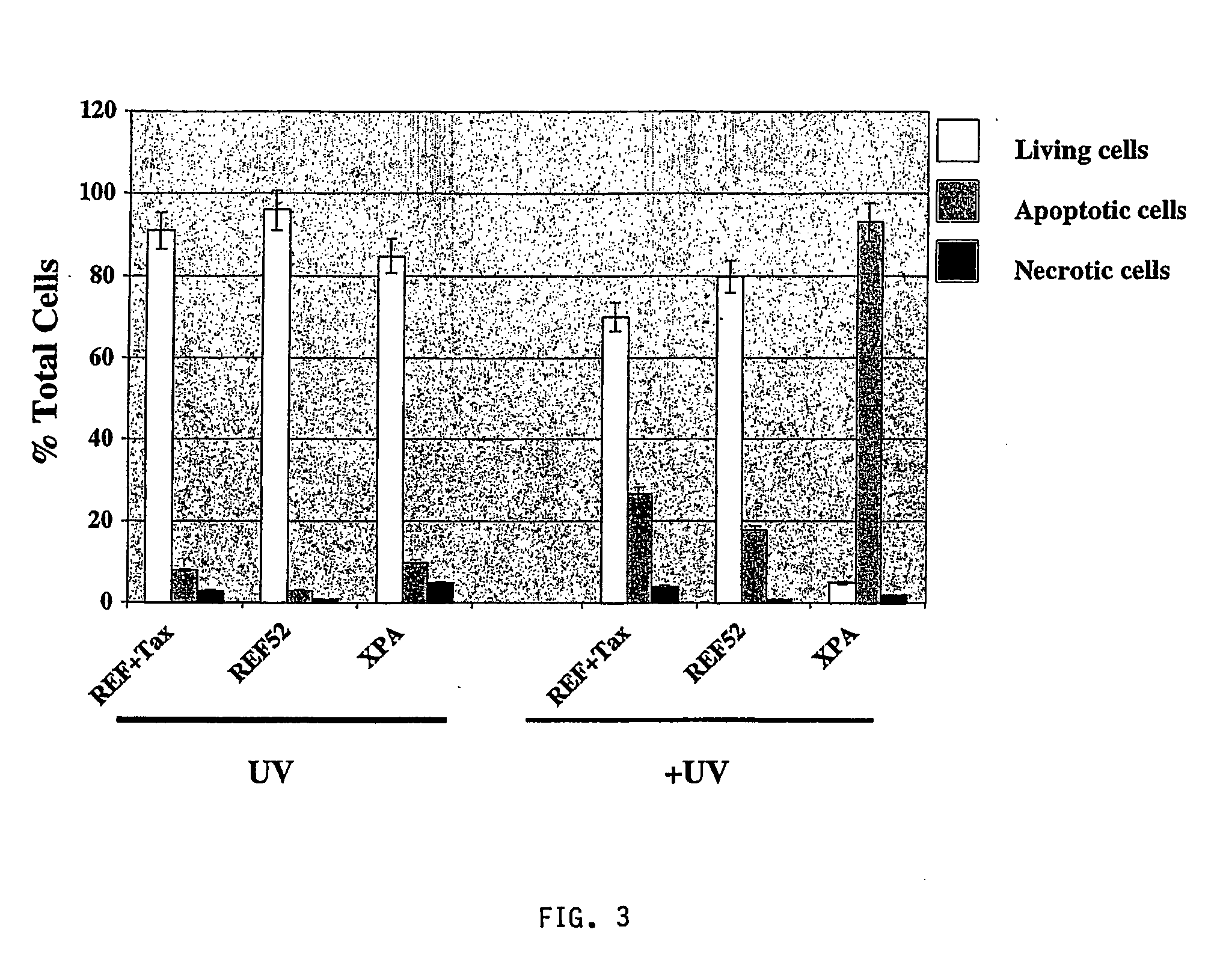Htlv-I tax induced killing of p53 null cancer cells
a null cancer cell, htlvi technology, applied in the direction of biocide, genetic material ingredients, animal repellents, etc., can solve the problems of reducing the viability of the cell or inducing its death, and enhancing the sensitivity of the targeted cell to a dna damaging agent. , the effect of reducing the viability or inducing cell death
- Summary
- Abstract
- Description
- Claims
- Application Information
AI Technical Summary
Benefits of technology
Problems solved by technology
Method used
Image
Examples
example 1
Materials
[0044] The plasmids used for retroviral transduction were made as previously described in Naldini, L., et al., Science 272:263-267 (1996) and U.S. Pat. Nos. 6,428,953 and 6,555,342, herein incorporated by reference. pMD.G was used for the production of the envelope protein G of vesicular stomatitis virus. PCMV(delta)8.2, was the packaging construct, and was used for the production of Human Immunodeficiency Virus gag, pol and regions of env. The delivery construct pHRTax was made by inserting the tax ORF (GenBank No. S67443; Accession No. GI 455730), into the Xho I and Bgl II site of pHRCMV and produced “packagable” viral RNA. pHRTaxiGFP and pHRGFP produced either Tax-GFP and GFP packagable RNA. pRSV-CAT contained the cat (chloramphenicol acetyltransferase) reporter gene under the control of the RSV (Rous Sarcoma Virus) promoter, and pMSV-Luc contained the luciferase gene under the control of MSV (Moloney Sarcoma Virus) promoter. The REF52 (Rat Embryonic Fibroblasts) cell ...
PUM
| Property | Measurement | Unit |
|---|---|---|
| Cell death | aaaaa | aaaaa |
| Chemotherapeutic properties | aaaaa | aaaaa |
Abstract
Description
Claims
Application Information
 Login to View More
Login to View More - R&D
- Intellectual Property
- Life Sciences
- Materials
- Tech Scout
- Unparalleled Data Quality
- Higher Quality Content
- 60% Fewer Hallucinations
Browse by: Latest US Patents, China's latest patents, Technical Efficacy Thesaurus, Application Domain, Technology Topic, Popular Technical Reports.
© 2025 PatSnap. All rights reserved.Legal|Privacy policy|Modern Slavery Act Transparency Statement|Sitemap|About US| Contact US: help@patsnap.com



